2021 Plenty of Beauty at the Bottom Image Contest

The Plenty of Beauty at the Bottom image competition was fierce this year with so many amazing images competing for the Virginia Tech slots in the NNCI contest! Below are the three entries that we have selected to move on to the NNCI competition (https://www.nnci.net/plenty-beauty-bottom).
Local Winners - Submitted to NNCI Competition
Submission Category: Most Stunning
Title: There are plenty of sunflowers at the dark bottom!
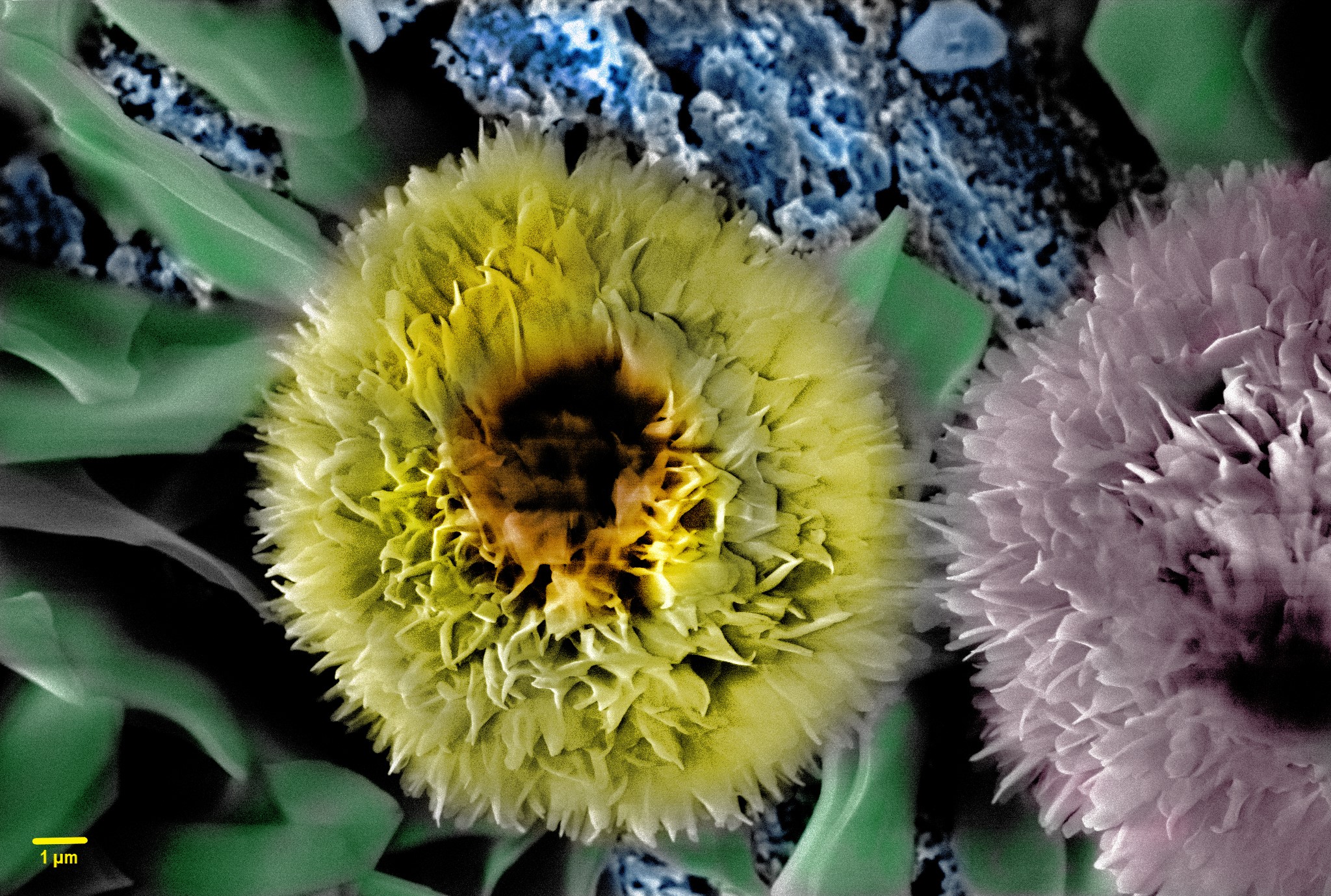
Artists: S.M. Ali Mousavi, Ph.D. Candidate and Sibin K. Purayil, Post-Doc, Mechanical Engineering
Tool: LEO (Zeiss) 1550 Field Emission Scanning Electron Microscope
Short Description: One may think sunflowers only grow on soil and lighted earth surface. In the chamber of an SEM and on the pretty dark bottom of brass surfaces, sunflowers were seen growing with nanosized petals all saying “there are plenty of sunflowers at the dark bottom!” to bring hope to all those who need it! The chemisorption of stearic acid on textured etched brass metal surfaces form sunflower-like asperities along nano sheet leaf-like structures.
Submission Category: Most Unique Capability
Title: River and Mountains
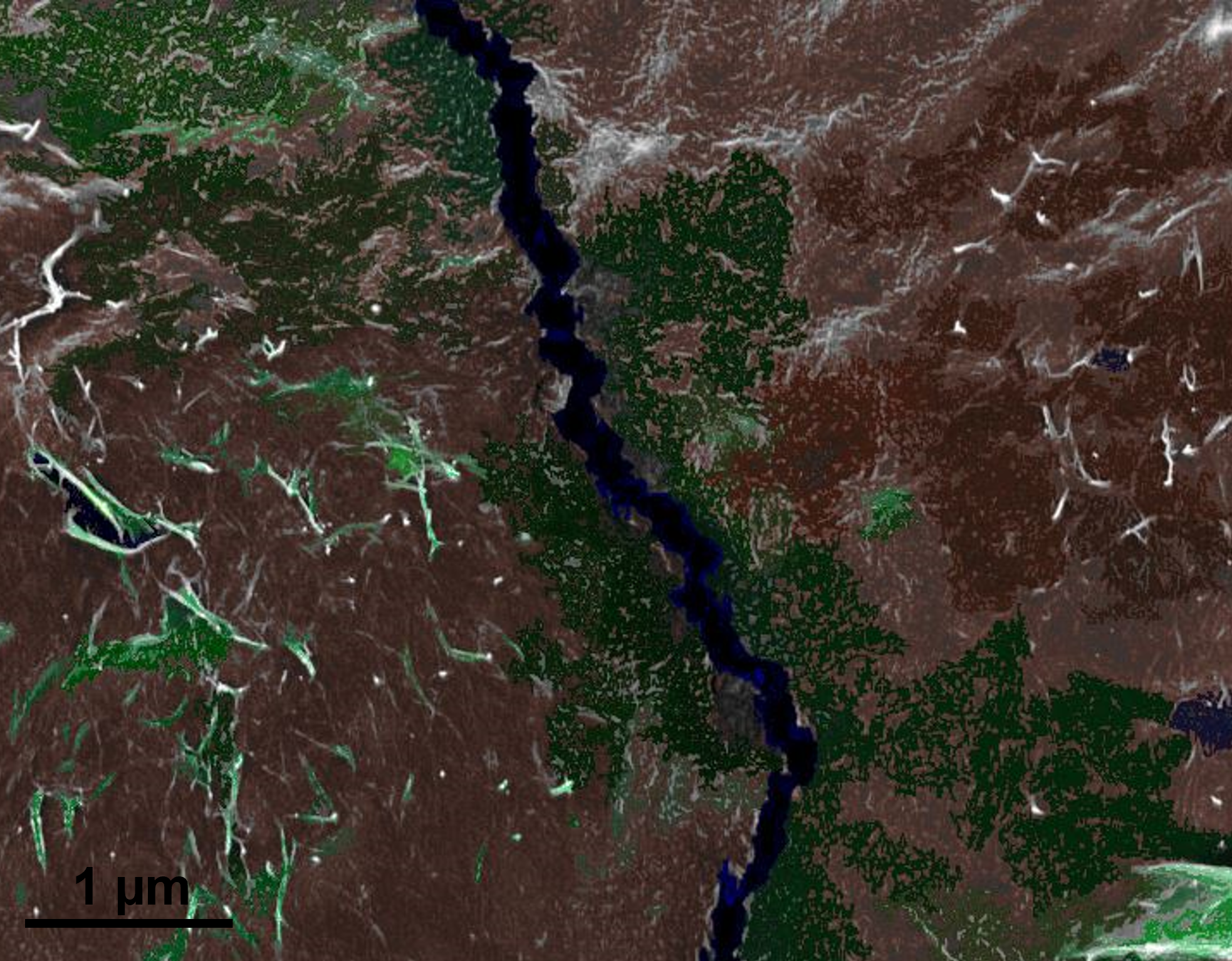
Artists: Zacary Croft and Oscar Valenzuela, Ph.D. Candidates, Chemistry
Tool: LEO (Zeiss) 1550 Field Emission Scanning Electron Microscope
Short Description: “River and Mountains” features a scanning electron microscopy (SEM) image of the surface of a polymer-graphene thin-film, with the polymer facing upward. The polymer featured here is the well-known, high-strength polymer, Kevlar®, which tends to form fibrous structures, and a single-layer of graphene has been added to selectively tune the structure of Kevlar® at the surface of the film, creating a diverse and scenic material “landscape.” The overhead angle of the image provides a bird’s-eye view of this landscape, and color has been added to highlight prominent features of the material and their resemblance to nature, without any additional alterations.
Submission Category: Most Whimsical
Title: Lotus on Anti-SARS-CoV-2 Coating
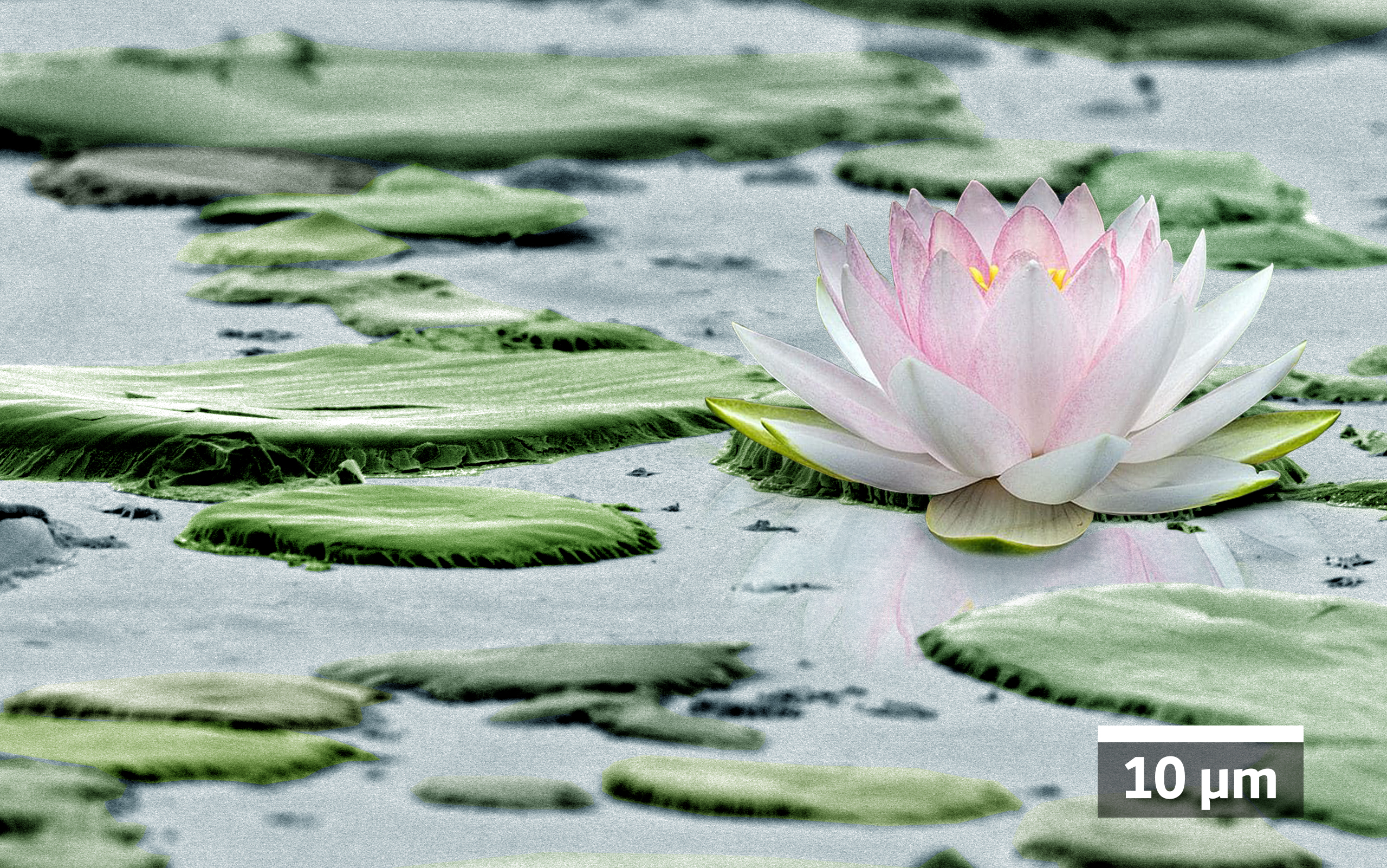
Artists: Mohsen Hosseini, Ph.D. Candidate and William A. Ducker, Professor, Chemical Engineering
Tool: JEOL IT500HR Scanning Electron Microscope
Short Description: Transparent silver based antimicrobial coating. The coating is a thin film made out of particles bound to glass substrate and has been specifically made as our response to the COVID-19 pandemic as engineers. One of the transmission routes for SARS-CoV-2 is through contact with contaminated objects and touching nose or mouth accordingly. This coating limits this transmission route. The coating has also demonstrated the ability to kill bacteria such as P. aeruginosa, S. aureus and MRSA. The scanning electron microscopic image shows the beauty at the micro scale of this coating, implying a lotus flower (nelumbo nucifera) environment.
Congratulations to Ali, Sibin, Zac, Oscar, Mohsen, and William! Good luck in the full competition!
Honorable Mentions
We also have a couple of fun honorable mentions for the Most Whimsical category that we loved so much we had to share.
Title: Two sheep go for one drink
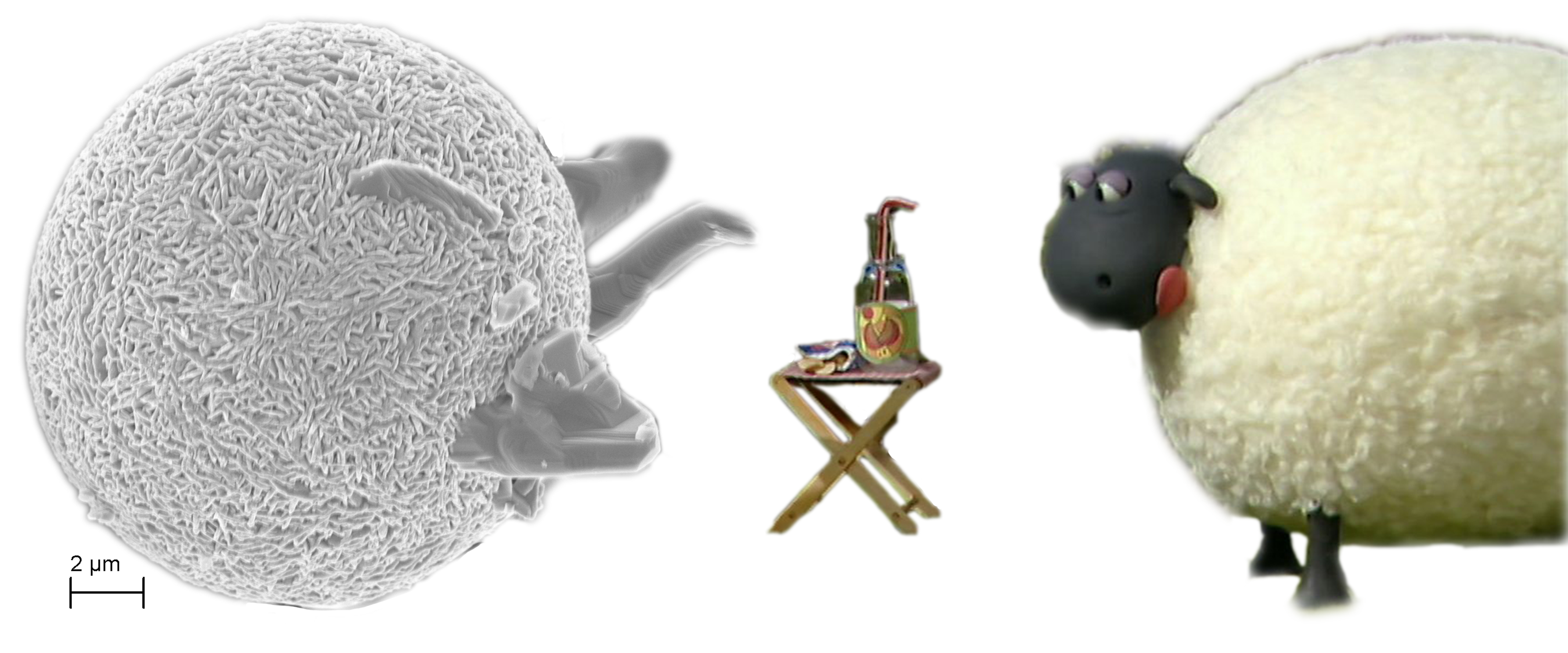
Artists: Dong Hou, Post-Doc, and Feng Lin, Associate Professor
Tool: LEO (Zeiss) 1550 Field Emission Scanning Electron Microscope
Short Description: SEM image capturing a polycrystalline oxide particle at an intermediate stage of the synthesis process.
The material is LiNi0.8Mn0.1Co0.1O2, which is the most promising cathode candidate in the rechargeable lithium-ion battery field. Understanding how the particle morphology changes and the formation mechanism is crucial for designing new generation batteries with desired performance. The dark dendrite-like substance growing from the rounded particle is from the molten salt when heated above a specific temperature and is believed to accelerate the formation to the final product.
Title: µOrion
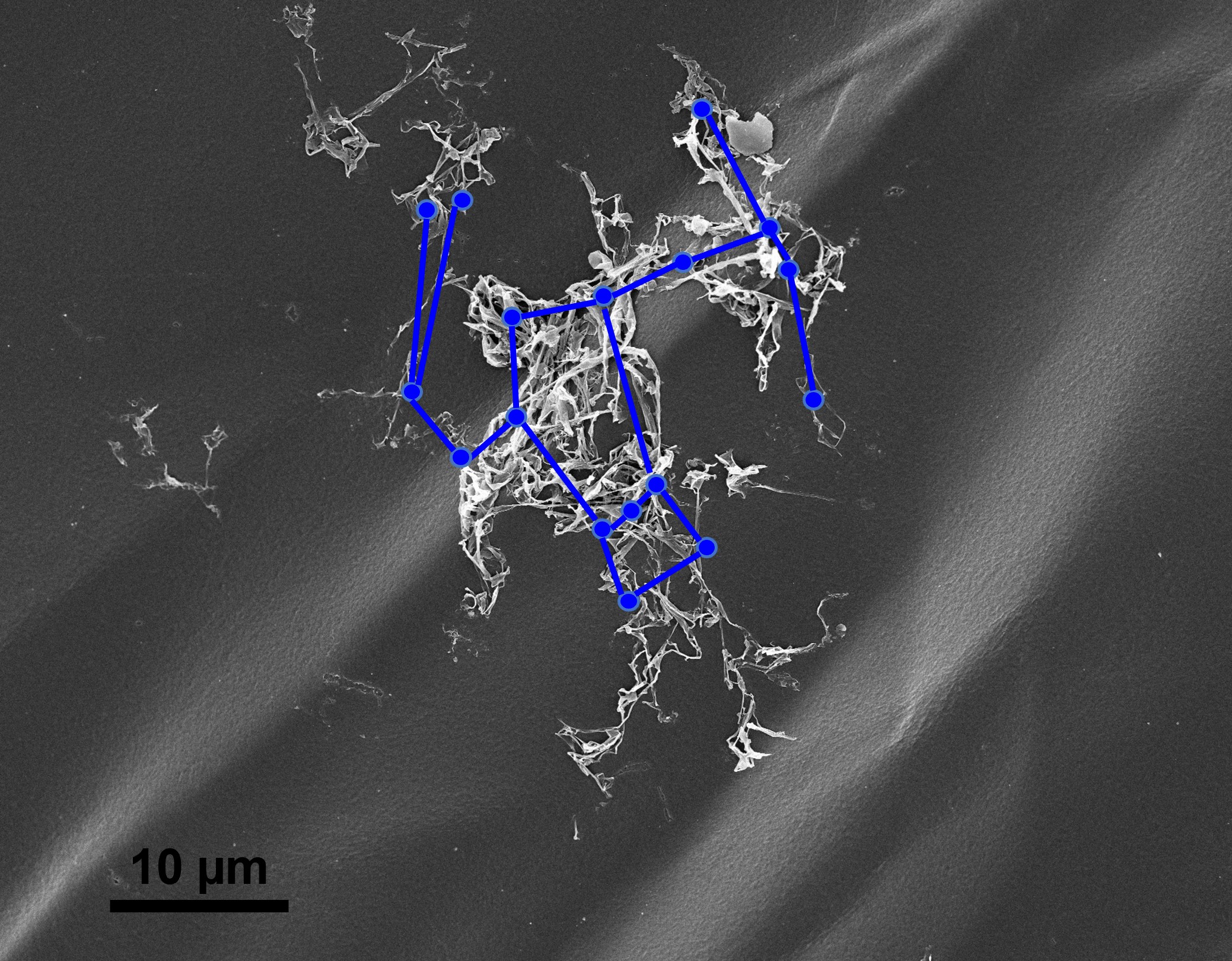
Artists: Zacary Croft and Oscar Valenzuela, Ph.D. Candidates, Chemistry
Tool: LEO (Zeiss) 1550 Field Emission Scanning Electron Microscope
Short Description: “µOrion” (pronounced micro-Orion) features a single layer of graphene covering an underlying polymer layer to create what looks like rolling, sandy dunes. The polymer is the well-known, high-strength polymer, Kevlar®, which tends to form fibrous structures. Some of these Kevlar® fibers have penetrated the graphene to form a micro-sized feature resembling the well-known constellation, Orion, which is highlighted visually with inserted apexes and lines. Just as ancient explorers were once guided through dark and arid deserts by the constellation, so too are modern scientists still encountering him at the micro-scale, reminding us that “as above, so below.”





